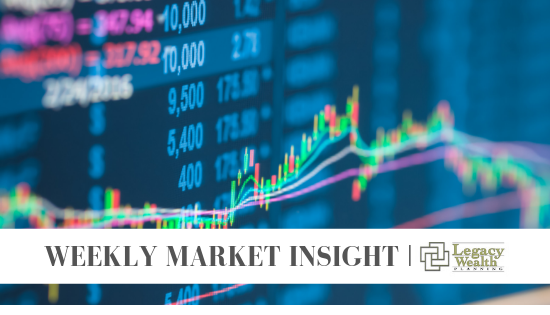
World trade volumes contracted in June and the second quarter as the United States-China trade conflict impacted the amount of goods crossing borders. On a quarter-over-quarter basis, trade has contracted for three consecutive quarters.
This is not too surprising given the current trade environment. The slowdown in global trade has been significant since President Trump first slapped tariffs on washing machines in February 2018, and followed up with tariffs on Chinese imports in March 2018. As shown in the LPL Chart of the Day, Global Trade Has Slowed Significantly, world trade volumes have tumbled from 5-6% annual growth to a slight decline in just 16 months, even though some trade activity is being shifted to other countries in Southeast Asia.
Slower economic growth in Europe and Japan has been a drag on trade, and Japan and South Korea are having a trade dispute, but there is no doubt the impact of the United States-China conflict has been substantial.
“The tailwinds of fiscal stimulus have been no match for the headwind of trade uncertainty,” said LPL Financial Chief Investment Strategist John Lynch. “Using the C + I + G + X formula that we remember from Economics 101, the C (consumer) is doing pretty much all of the work, with some help from the G (government), while neither the I (capital investment) or the X (trade) are carrying their weight.”
We still believe that the economic pain being inflicted on the United States and China during this conflict will lead to an agreement. President Trump will focus on the economy in his 2020 re-election campaign, as the trade conflict has clearly weighed on domestic growth. Deferring tariffs until December and carving out consumer goods illustrate that the Trump administration recognizes the economic damage being done. Still, there is an increasing risk after the recent escalation that the conflict drags on through 2020.
Until we get clarity on trade, we expect monetary and fiscal stimulus and a healthy U.S. consumer to help keep the economic expansion going and provide support for U.S. stocks.
IMPORTANT DISCLOSURES
Please see the Midyear Outlook 2019: FUNDAMENTAL: How to Focus on What Really Matters in the Markets for additional description and disclosure.
The opinions voiced in this material are for general information only and are not intended to provide specific advice or recommendations for any individual security. To determine which investment(s) may be appropriate for you, consult your financial advisor prior to investing. The economic forecasts set forth in this material may not develop as predicted.
Because of their narrow focus, sector investing will be subject to greater volatility than investing more broadly across many sectors and companies.
All indexes are unmanaged and cannot be invested into directly. Unmanaged index returns do not reflect fees, expenses, or sales charges. Index performance is not indicative of the performance of any investment. All performance referenced is historical and is no guarantee of future results.
Purchasing Managers Indexes are economic indicators derived from monthly surveys of private sector companies, and are intended to show the economic health of the manufacturing sector. A PMI of more than 50 indicates expansion in the manufacturing sector, a reading below 50 indicates contraction, and a reading of 50 indicates no change. The two principal producers of PMIs are Markit Group, which conducts PMIs for over 30 countries worldwide, and the Institute for Supply Management (ISM), which conducts PMIs for the US.Market implied rate hike expectations are calculated based on the pricing of various fed funds futures contracts.Investing involves risks including possible loss of principal. No investment strategy or risk management technique can guarantee return or eliminate risk in all market environments.
Rebalancing a portfolio may cause investors to incur tax liabilities and/or transaction costs and does not assure a profit or protect against a loss. There is no guarantee that a diversified portfolio will enhance overall returns or outperform a non-diversified portfolio. Diversification does not protect against market risk.
All company names noted herein are for educational purposes only and not an indication of trading intent or a solicitation of their products or services. LPL Financial doesn’t provide research on individual equities.
This Research material was prepared by LPL Financial, LLC.
Securities and advisory services offered through LPL Financial (LPL), a registered investment advisor and broker-dealer (Member FINRA/SIPC). Insurance products are offered through LPL or its licensed affiliates. To the extent you are receiving investment advice from a separately registered independent investment advisor, please note that LPL is not an affiliate of and makes no representation with respect to such entity.
If your advisor is located at a bank or credit union, please note that the bank/credit union is not registered as a broker-dealer or investment advisor. Registered representatives of LPL may also be employees of the bank/credit union. These products and services are being offered through LPL or its affiliates, which are separate entities from, and not affiliates of, the bank/credit union. Securities and insurance offered through LPL or its affiliates are:
| Not FDIC or NCUA/NCUSIF Insured | No Bank or Credit Union Guarantee | May Lose Value | Not Guaranteed by Any Government Agency | Not a Bank/Credit Union Deposit |
For Public Use | Tracking # 1-888124